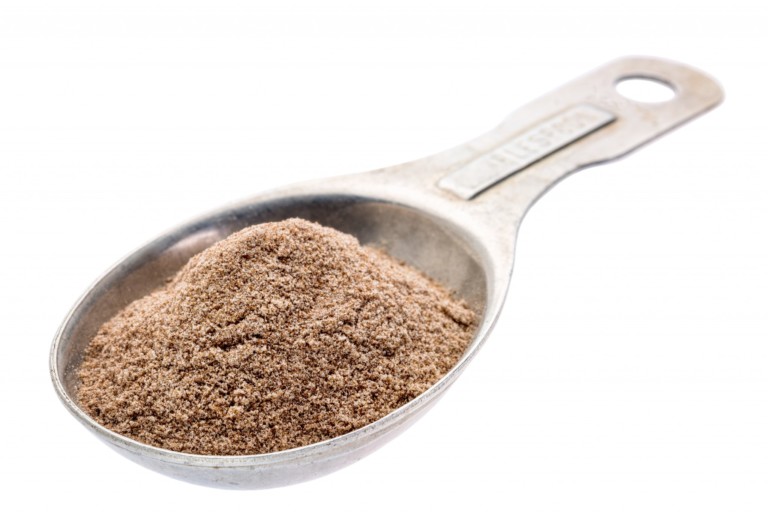When adopting a gluten-free diet, it’s understandable that you’ll want to rid your home of all potential sources of gluten. Out go those pantry staples that contain wheat, barley and rye, but have you given a thought to the products in your medicine cabinet?
Unfortunately, pharmaceutical products can be an unexpected source of gluten. While it’s far more likely you’ll find gluten in surprising places in supermarket aisles (ice-cream freezer, I’m looking at you), it pays to be aware of the ingredients in your prescription and over-the-counter (OTC) medications.
WHAT’S IN YOUR MEDS?
The tablets and capsules you take, both prescription and OTC, are made up of an active ingredient/s and added extras that are necessary to ensure the body can absorb the active ingredient in the right place at the right time. These additives are known as excipients.
Excipients include fillers, binders, disintegrants, flow aids, lubricants, surfactants and modified release agents. A lot is going on inside each small pill and the excipients are sometimes where gluten can sneak in.
“Gluten is used as an excipient (additive) in drug formulations as a binder, disintegrant or bulking agent,” says Feras Karem, a pharmacist and Managing Director of the Pharmacy 4 Less chain. Fortunately, according to Karem, the majority of orally administered drug products either contain no gluten or virtually no gluten.
“Gluten, though an extremely low chance, can be found in products that are administered in any way except for topical application,” says Karem. “Gluten is only required to be declared on the label where the concentration in the medicine is 20 parts per million or more. It is the same rule that applies to food in Australia. “
LABELLING PHARMACEUTICAL PRODUCTS
The Therapeutic Goods Administration (TGA) is responsible for medicine labelling requirements in Australia. “The TGA recognises the importance of information being available to consumers, including on potential allergens,” says Neil Branch, a spokesperson for the TGA. “Most medicines are not required to list all the ingredients included in the formulation on the label, but there are requirements for certain substances to be declared on the label if they are present.”
NON-PRESCRIPTION MEDICINES
According to the current TGA legislation, non-prescription/OTC medications must declare the presence of gluten or ingredients derived from gluten-containing grains. It will usually appear on the label as the name of the ingredient, e.g. ‘contains wheat starch’.
PRESCRIPTION MEDICINES
Surprisingly, prescription medicine labels are currently not required by the TGA to declare the presence of gluten or ingredients derived from gluten-containing ingredients. However, a full list of ingredients must be included in the product information and consumer medicines information for each prescription product. These documents can be obtained from your GP, pharmacist or the TGA website (www.tga.gov.au).
CHANGES TO LABELLING LAWS
After consultation with consumers, health professionals and industry, Australian labelling requirements were updated in 2016. “Declaration of allergens was a key feature of the reforms to help consumers find the information they need to use medicines safely,” says Branch.
LABEL ALERT * NO ADDED GLUTEN
Sometimes on products, particularly listed medicines like vitamins, you’ll see “NO ADDED GLUTEN” proudly displayed on the packaging. This is a challenging statement for people following a gluten-free diet, especially those with coeliac disease.
“No added gluten, means no gluten ingredients are used in the product,” says Karem. “If it’s not declared on the label, it may be assumed that there is no intrinsic gluten in any ingredient in any product, but these products have not been tested for gluten. These products are not able to claim they are gluten-free.”
WHAT TO LOOK FOR
Pharmacist Feras Karem explains what to look for and where when it comes to allergen labelling on pharmaceutical products.
PRESCRIPTIONS
Allergen information (including listing of gluten if used) should appear on either the label or the pack or in the Consumer Medicine Information leaflet.
OVER THE COUNTER MEDICINES
This information should be on the back or side of the medicine pack, listed under the “Warnings” heading. There may also be an “allergy” subheading under warnings.
LISTED MEDICINES (COMPLEMENTARY)
This includes vitamins and supplements. Allergy warnings are usually found on the back or side label. If you’re unsure, speak to your pharmacist.
The changes are a step forward for gluten-free consumers. “All medicines containing gluten at a concentration of 20 parts per million (ppm) or more will need to make a declaration on the label,” says Branch.
Labels on prescription products will now be required to carry a ‘contains gluten’ statement or another that refers patients to the product information and consumer medicines information for allergy information.
Another change introduced as part of the labelling reforms is the introduction of machine-readable codes. “Medicine companies can choose to use a 2D data matrix code that allows information, such as allergens in medicines, to be made available electronically,” says Branch.
Rollout of the new labelling requirements will take some time, with pharmaceutical companies given until 2020 to conform. “New labels are now starting to appear on medicines,” says Branch. “Medicine manufacturers have until September 2020 to update their labels to meet the new requirements which means that medicines with labels meeting the old requirements will still be on the market for some time.”
WHAT SHOULD CONSUMERS DO?
“During the transition to September 2020, it may be necessary to check with doctors, pharmacists or health care professionals; or the medicine sponsor, if medicines contain lactose or gluten,” says Branch. He also recommends a free app (Medsearch) that can be used to access all the product information and consumer medicines information documents.
“Consumers can also contact the TGA to ask about the presence or absence of a particular excipient in a medicine,” he says.







